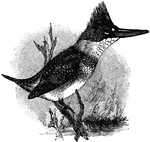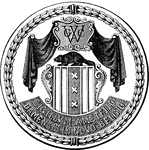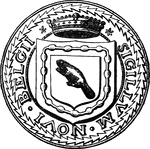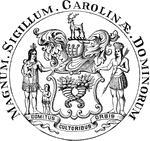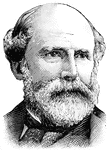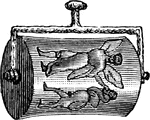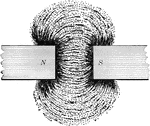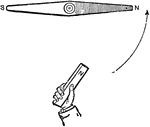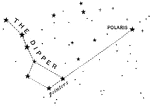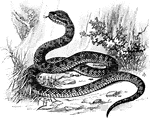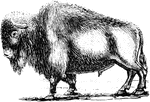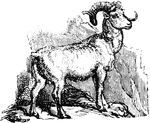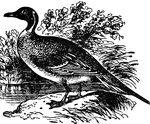
Pintail Duck
"The Pintail Duck has the upper parts and flanks ash, with narrow stripes of black; under parts white;…
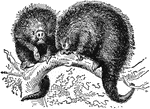
Prehensile Tailed Porcupine
"The Porcupine is a rodent quadruped. The North American porcupine is about two feet long, and of sluggish…

Hystrix Crystata Porcupine
"The Porcupine is a rodent quadruped. The North American porcupine is about two feet long, and of sluggish…
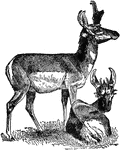
Prong-horn Antelope
"The Prong-horn Antelope inhabits the W. parts of North America, from 53 degrees N. to the plains of…
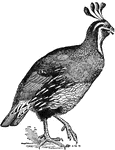
Lophortyx Californicus Quail
"The Quail is a small game bird; the Virginia species is common in North America, and so far south as…

Procyon Lotor Raccoon
"The Raccoon, or Racoon, is a handsome animal, about the size of a large cat, brown furry hair, tail…

Hooded Seal
"The Seal, of the family Phocidæ, or seal tribe, are, of all four-limbed mammiferous animals,…
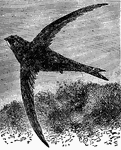
Common Swift
"The Swift, like swallows in many respects, their structure is almost entirely different, and some naturalists…
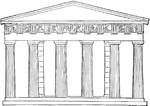
Thesium restored
"The Theseum is situated on a height to the north of the Areopagus, and was built to receive the bones…

Erechtheum restored
"The building of the new Erechtheum was not commenced till the Parthenon and Propylea were finished,…
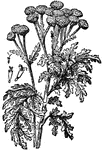
Tansy
"Tansy is a genus of Compositæ, numbering about 50 species of strong-scented herbs, often shrubby…
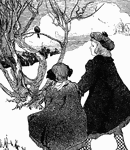
Poor Robin
The north wind doth blow, and we shall have snow, and what will poor Robin do then? Poor thing! He'll…
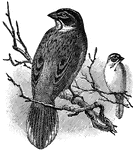
Lark Finch
A North American bird having a long graduated, party colored tail, and the head much striped.
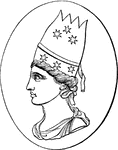
Tiara
"Tiara or Tiaras, a hat with a large high crown. This was the head-dress which characterized the north-western…
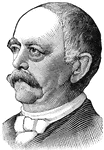
Prince Bismarck
Otto von Bismarck was the Duke of Lauenburg, Prime Minister of Prussia, and Chancellor of the North…
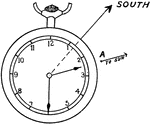
True meridian
"The position of the true meridian may be found as follows: Point the hour hand of a watch towards the…
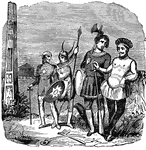
Saxons
"In the eleventh century, the Anglo-Saxons, originally the fiercest nation of the North of Europe, had…
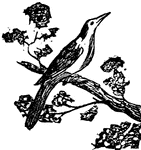
Mockingbird
A singing-bird of North America remarkable for its exact imitations of the notes of other birds.
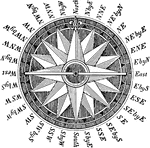
Compass
A instrument used for navigation. The needle is magnetic and always points to the north pole.

Needle, compass
"Bring the two ends of the wire into contact, and thus close the circuit. The needle instantly flies…
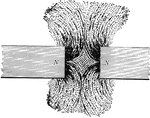
Repelling poles
A pair of similar magnetic poles repelling, the magnetic forces shown by iron filings.

Solenoidal magnet
"The polarity of the solenoidal magnet may be determined by holding it in the right hand so that the…

Belted Kingfisher
"Many species of the kingfisher family are found in various parts of the world. The belted kingfisher…

A Dutch Patroon
In the United States, a patroon was a landholder with manorial rights to large tracts of land in the…

Skylark
A small passerine bird that breeds across most of Europe and Asia, as well as the mountains of north…
Ling
A species of sea-fish found in the northern seas as far north as Iceland. It is allied to the cod family.…

Macaw
A genus of birds native to tropical South America, remarkable for their size and beauty of their plumage.…

Mackerel
An excellent food fish, widely distributed, and particularly abundant in the North Atlantic. It attains…
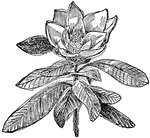
Magnolia
A genus of ornamental shrubs and trees, native to North America, China, India, Japan, and other portions…

Mammoth
The Russian name of the large extinct elephant closely resembling the Indian elephant, and of which…
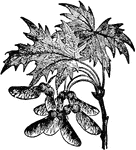
Maple
A class of trees belonging to the genus acer, containing about eighty species, all of which are confined…

Marmot
Native to North America and Eurasia. The best known species of North America are the prairie marmot…

Meadowlark
A bird of North america, and common in the United States as far south as the Mexican boundary.

Menhaden
A fish found in abundance off the Atlantic coast of North America, and often called whitefish, hardhead,…

Mound Builders
Mount Builders, the name applied to a prehistoric race of North America, of which remarkable remains…

Pear Design
"Also known as the cone, the palm leaf, the river loop, the crown jewel, the seal, the almond, the feather,…
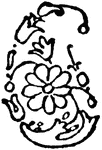
Pear Design
"Also known as the cone, the palm leaf, the river loop, the crown jewel, the seal, the almond, the feather,…

Pear Design
"Also known as the cone, the palm leaf, the river loop, the crown jewel, the seal, the almond, the feather,…

Pear Design
"Also known as the cone, the palm leaf, the river loop, the crown jewel, the seal, the almond, the feather,…
Pear Design
"Also known as the cone, the palm leaf, the river loop, the crown jewel, the seal, the almond, the feather,…
Pear Design
"Also known as the cone, the palm leaf, the river loop, the crown jewel, the seal, the almond, the feather,…
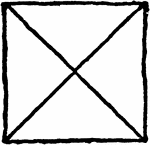
Solomon's Seal
Built on the right angle triangle and, like the Signet of David, it is found in many of the Turkish…

Night Hawk
A bird found extensively in North America, belonging to the family of goatsuckers. It is a value for…

Norsemen
A name applied to the inhabitants of the coast regions of Scandinavia and North Germany, who were noted…
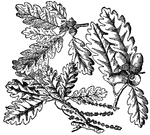
Oak
A genus of trees and shrubs widely distributed in the temperate zones of all the continents, but most…
